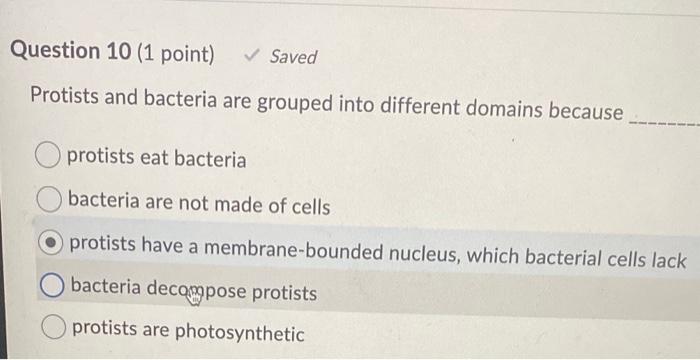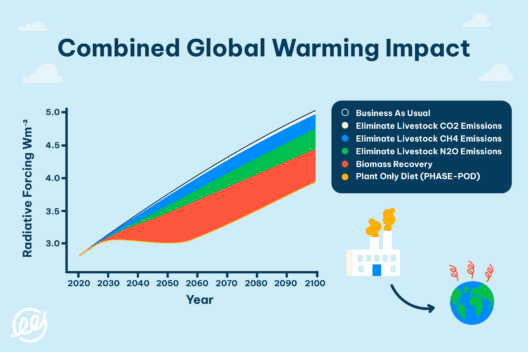In the grand tapestry of life, the microscopic realm of bacteria and protists may seem minuscule, yet they play colossal roles in Earth’s ecosystems and climate regulation. These minuscule entities are akin to the silent sentinels of our planet, tirelessly working to maintain the balance required for life. As we face the daunting specter of global warming, acknowledging the pivotal roles of these microorganisms becomes increasingly crucial.
Bacteria, the versatile architects of life, and protists, the enigmatic eukaryotes, form a significant faction in the Earth’s biogeochemical processes. They are nature’s diminutive titans, wielding an intrinsic ability to mitigate the crux of climate change: greenhouse gases. To understand their impact, we must delve into several key modalities through which they influence our atmosphere.
First and foremost, let us consider the role of bacteria in carbon cycling. These microscopic organisms are the unsung champions of decomposition. As organic matter—yanagig a fallen leaf or a deceased organism—breaks down, bacteria break it down into simpler compounds. Carbon, once securely locked away in biological material, is released back into soil and water systems in the form of carbon dioxide and methane. However, certain groups of bacteria engage in anaerobic respiration, converting organic materials into stable forms of carbon like humus, thus sequestering carbon in the soil instead of allowing it to return to the atmosphere as greenhouse gases. This metabolic alchemy allows bacteria to become invaluable allies in combating climate change, transforming the end of life into a carbon sink rather than a carbon source.
Furthermore, the protean nature of protists cannot be overstated. These organisms are often found in aquatic systems, where they play a transformative role in the ocean’s carbon cycle. Marine protists, like phytoplankton, are photosynthetic powerhouses, converting sunlight into energy and absorbing substantial amounts of carbon dioxide. It is estimated that phytoplankton contributes to over half of the planet’s oxygen supply while acting as a crucial component in carbon fixation. They utilize sunlight to convert CO2 into organic matter during photosynthesis, forming the base of the aquatic food web. When these organisms die, they sink to the ocean floor, effectively sequestering carbon and preventing its reintroduction into the atmosphere. Thus, protists emerge as the oceanic guardians shielding us from the perils of an overheating planet.
The interplay between bacteria and protists extends beyond merely sequestering carbon. Both serve as biological indicators of ecosystem health, creating rippling effects on regulation. When environmental disturbances, such as nutrient runoff or pollution, occur, the balance of these microorganisms is disrupted, which can lead to algal blooms, oxygen depletion, and the subsequent release of greenhouse gases like methane. Monitoring the populations and health of bacteria and protists provides key insights into ecosystem resilience and can inform conservation strategies aimed at mitigating climate impacts.
Moreover, the fascinating capabilities of certain bacteria to perform nitrogen fixation augment their significance in the struggle against climate change. Nitrogen-fixing bacteria convert atmospheric nitrogen into ammonia, a process essential for plant growth. Healthy plant ecosystems enhance photosynthesis, ultimately leading to more CO2 absorption. The delicate balance facilitated by bacteria allows for robust plant growth, contributing to terrestrial carbon sinks. In tandem, this symbiotic relationship among bacteria, plants, and the atmosphere exemplifies the intricacies of life’s interconnected web.
Beyond the terrestrial sphere, certain thermophilic bacteria thrive in extreme environments where carbon is stored as methane in permafrost. These microorganisms possess a unique resilience, serving as potent tools in understanding methane dynamics within age-old carbon reservoirs. Exploring their activities provides insights into potential pathways for methane mitigation, offering hope in our quest to curtail greenhouse gas emissions.
Nevertheless, it bears mentioning that the efficacy of bacteria and protists in climate change mitigation hinges upon their environmental conditions. Anthropogenic activities often degrade habitats, leading to a decline in microbial diversity. Environmental stressors, such as toxic pollutants, climate change, and habitat destruction, can negatively impact bacterial and protist populations, impairing their ability to effectively act as climate regulators. Hence, protecting ecological niches and fostering conditions conducive to their proliferation is paramount.
In exploring the heroic feats of these microorganisms, our awareness should also encompass the intriguing yet delicate balance of their roles. The story of bacteria and protists is not merely one of heroism; it is also a narrative of resilience and adaptability. Their capabilities are a reflection of nature’s intricate choreography, performing unceasing dances of life and death, decay and renewal, that encompass each ecosystem.
As we venture forth in the battle against global warming, the symbiotic relationships observed in nature underscore a fundamental truth: each microscopic organism contributes to a larger narrative. In acknowledging the roles of bacteria and protists, we grasp that solutions to climate change are often grounded in nature’s own mechanisms. By safeguarding these tiny heroes and leveraging their gifts, we can unlock profound strategies to combat the mounting climate crisis.
Bacteria and protists may be small, but their cumulative effects resonate through the air we breathe and the water we drink. They are the unsung eco-warriors, operating on a scale beyond human perception yet possessing the power to shape global ecosystems. This delicate symphony of life must be recognized and celebrated if we are to orchestrate a sustainable future for our planet. Empowering these tiny champions, protecting their environments, and fostering their diversity is not just an ecological responsibility; it is a moral imperative in our shared journey toward a thriving, balanced world.






